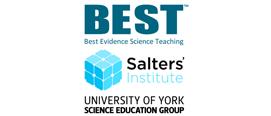- View more resources from this publisher
 Best Evidence Science Teaching
Best Evidence Science Teaching
Plant nutrition and photosynthesis
These diagnostic questions and response activities (contained in the zip file) support students in being able to:
-
Recall that plants are living organisms that need food to stay alive and grow.
-
Recall that plants are producers that use a process called photosynthesis to make their own food, rather than taking in food.
-
Describe photosynthesis using a simple model of the process, including what it requires (light, water and carbon dioxide) and what it synthesises (oxygen and carbohydrate food).
-
Apply the idea that photosynthesis takes place in chloroplasts inside plant cells.
-
Describe how plants use the carbohydrate food made by photosynthesis – i.e. as a building material to make biomass, and as a fuel for cellular respiration.
-
Recognise the importance of photosynthesis as the source of the biomass that is transferred through food chains.
The resources include details of common misconceptions and a summary of the research upon which the resources are based.
Download the zip file for all the questions and activities.
More resources like this can be found on the BEST webpage: Best Evidence in Science Teaching
Show health and safety information
Please be aware that resources have been published on the website in the form that they were originally supplied. This means that procedures reflect general practice and standards applicable at the time resources were produced and cannot be assumed to be acceptable today. Website users are fully responsible for ensuring that any activity, including practical work, which they carry out is in accordance with current regulations related to health and safety and that an appropriate risk assessment has been carried out.
Downloads
-
Resources 13.11 MB
-
Teacher notes 943.38 KB




